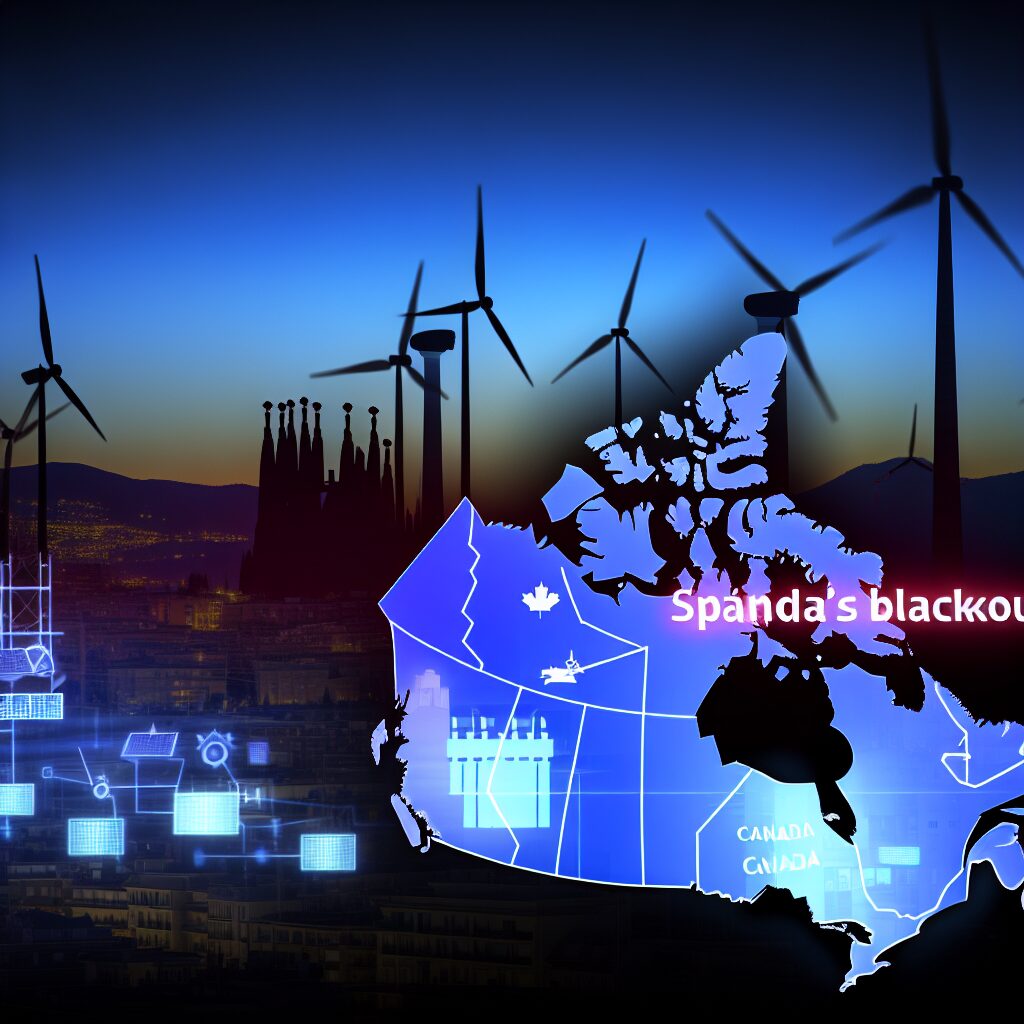Spain Blackout Preview: Canada’s Energy Future Implications Explained
The recent energy blackout that swept across parts of Spain has ignited critical conversations around the future of energy security—not just in Europe, but right here in Canada. Though geographically distant, the underlying causes and consequences of Spain’s energy shortfall provide valuable insights into what could potentially unfold in Canada if policy directions, infrastructure needs, and supply demands are not aligned effectively.
What Happened in Spain?
Spain experienced a notable energy blackout which was largely attributed to a combination of surging energy demands, constrained electricity grids, and an overreliance on renewable sources without sufficient backup systems. High temperatures boosted air conditioning usage while intermittent renewables—like wind and solar—underperformed during peak hours. The result was a strain on the country’s power grid, leading to widespread outages and service disruptions.
Why Canada Should Pay Attention
Canada may appear to be in a stronger position due to its vast natural resources and lower population density, but similar pressures are building within the national energy framework. As the federal government moves aggressively toward decarbonization and net-zero emissions goals, parallels with Spain’s challenges have become increasingly relevant.
Key Lessons for Canada
- Infrastructure Resilience: Like Spain, Canada’s existing grid infrastructure is aging. Without upgrades, it may struggle under increased loads from electric vehicles, heat pumps, and industrial electrification.
- Renewable Integration: While green energy adoption is essential, overdependence on intermittent sources without reliable backups (such as hydro or nuclear) can lead to instability.
- Supply Chain Coordination: Transitioning energy systems requires a seamless supply chain for components like batteries, transformers, and rare earth materials, many of which are globally sourced and susceptible to disruption.
- Provincial Disparities: Energy policy and capacity vary significantly between provinces. This lack of a unified national strategy risks regional blackouts during demand spikes.
The Role of Federal Policy
Ottawa’s Clean Electricity Regulations lay the groundwork for a net-zero grid by 2035. However, critics argue these mandates could outpace the ability of provinces to implement necessary infrastructure. If clean power generation does not keep up with growing demand, Canada could find itself in a situation reminiscent of Spain’s—energy-rich yet unable to deliver consistent service.
Effective planning must account for both peak consumption periods and transitional phases where fossil fuels still play a support role. Phasing out coal and natural gas too quickly without adequate replacements increases the risk of shortages and blackouts.
Interconnected Grids and Cross-Border Energy Trade
One potential buffer against isolated energy crises is the development of interconnected provincial grids and deeper cross-border cooperation with the United States. Doing so can enable load sharing, bolster reliability, and reduce costs. However, building such interconnections requires long-term investment and political coordination that remains fragmented at present.
Public Awareness and Preparedness
The Spanish blackout also highlighted the importance of public engagement and preparedness. Communication during energy emergencies, clear contingency plans, and community-level resilience strategies make a significant difference in response outcomes. In Canada, ramping up education on energy conservation and emergency planning could help mitigate the impact of potential disruptions.
Looking Ahead
While the Spanish experience is not a one-to-one comparison, it’s a cautionary tale of what happens when energy transition outpaces logistical reality. For Canadian leaders, the top priority should be balancing ambitious climate targets with the foundational need for secure, stable, and affordable energy.
Investments in modernizing the grid, diversifying energy sources, and strengthening national coordination will determine whether Canada successfully navigates this shift—or faces its own version of the Spanish blackout.
Analyzed and outlined by ChatGPT-4o, images by DALL·E 3.
Comment
A.I. missed the obvious transition to implement local energy storage – mini grids for peak demand support.
Source
https://nationalpost.com/opinion/first-reading-why-the-spain-blackout-is-being-framed-as-preview-of-canadas-future

